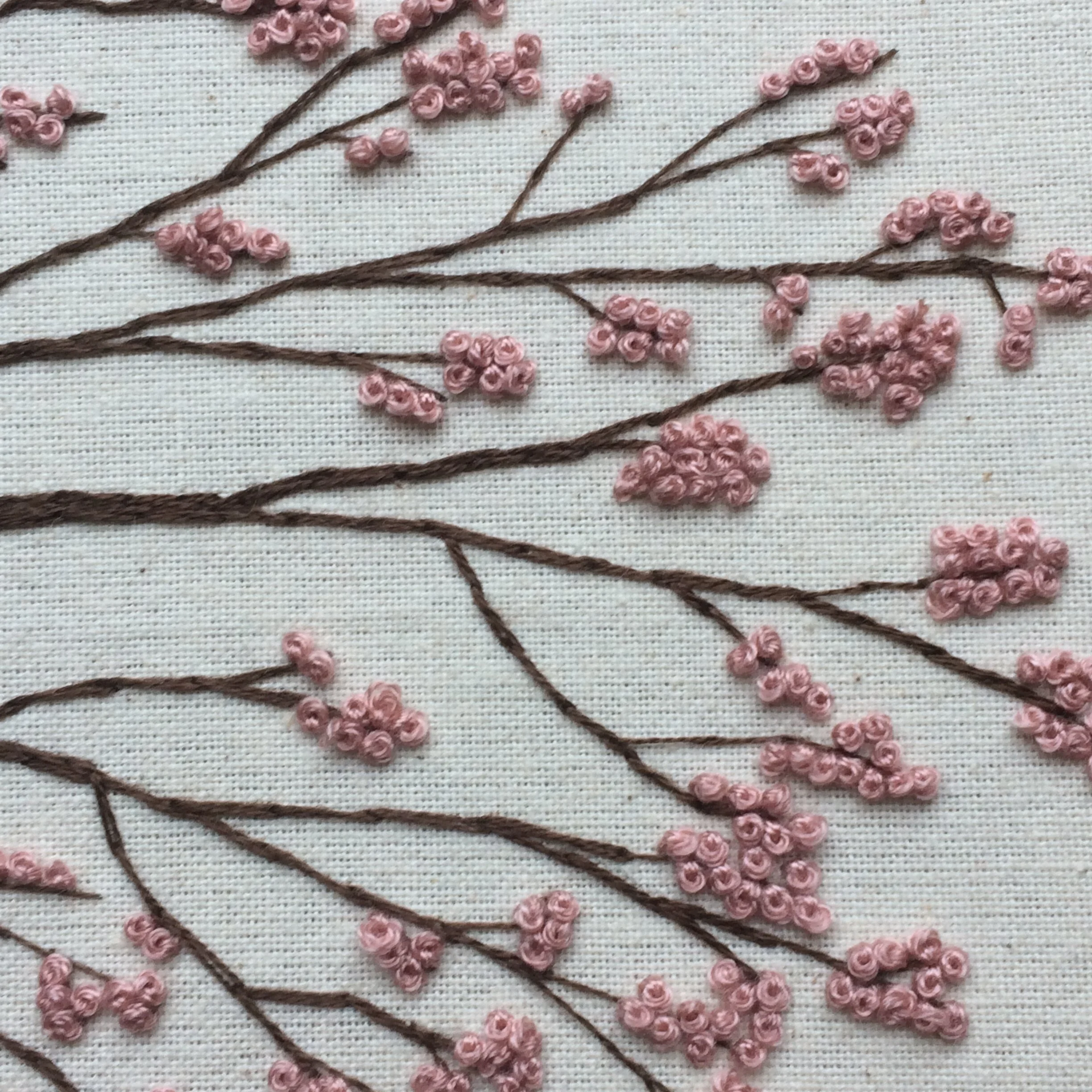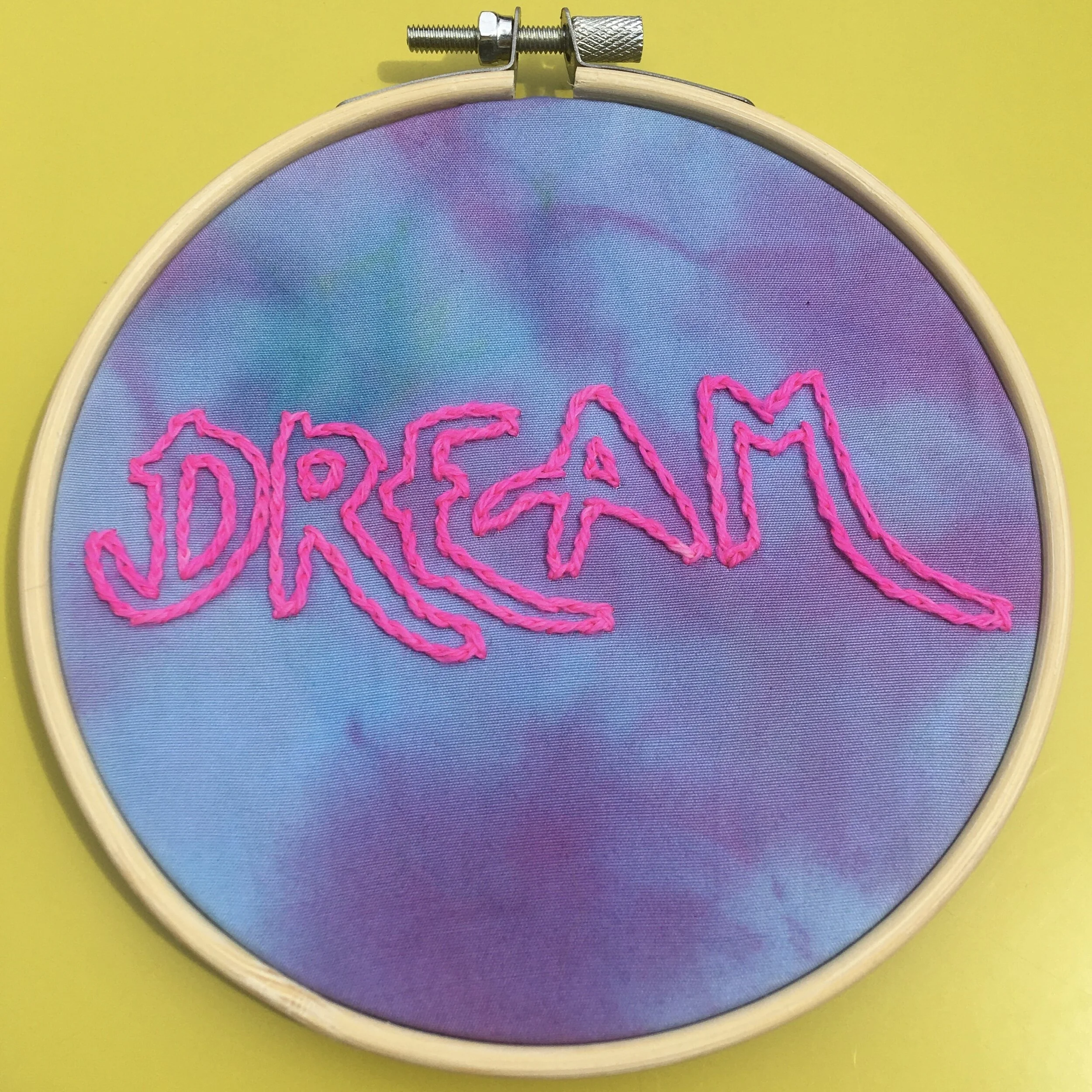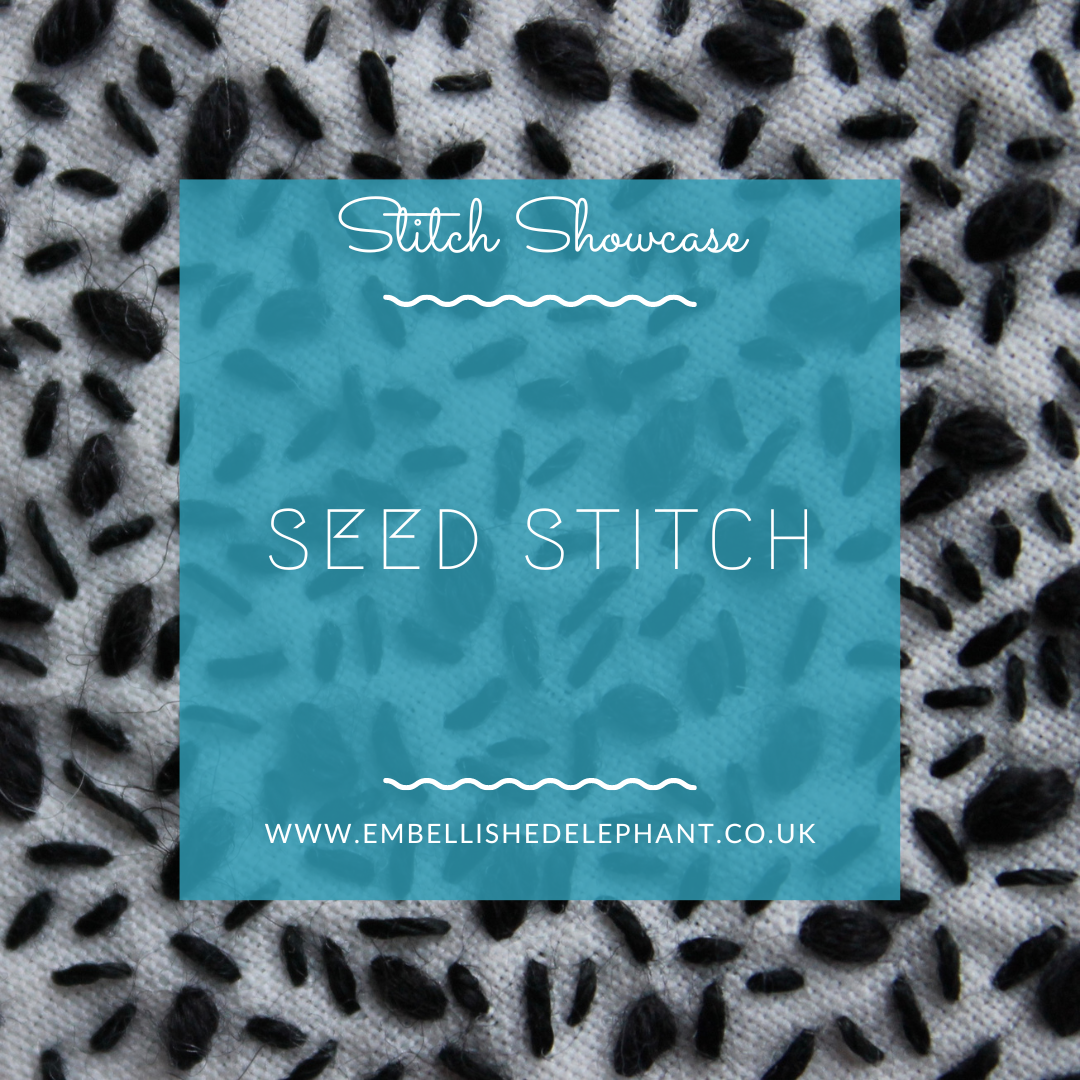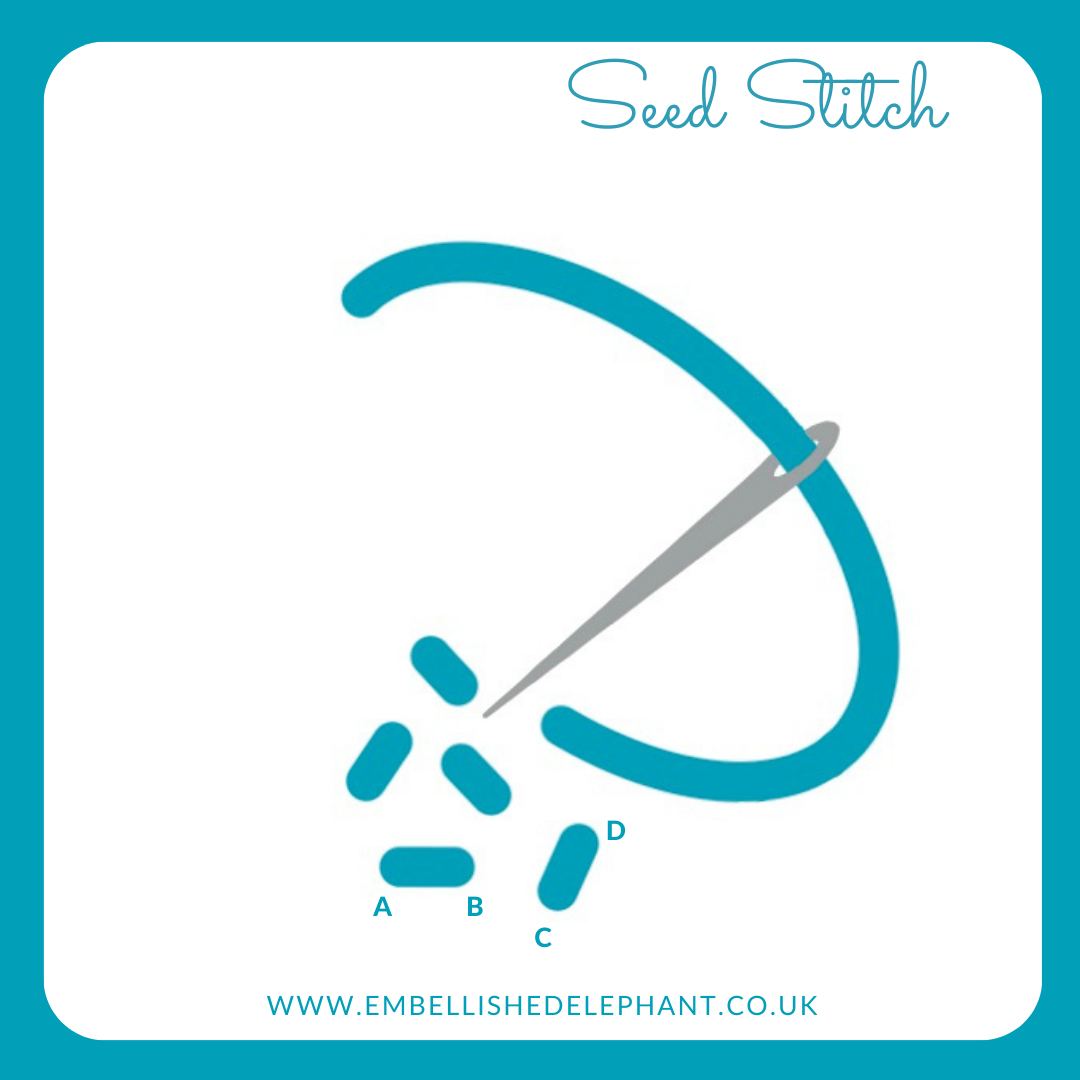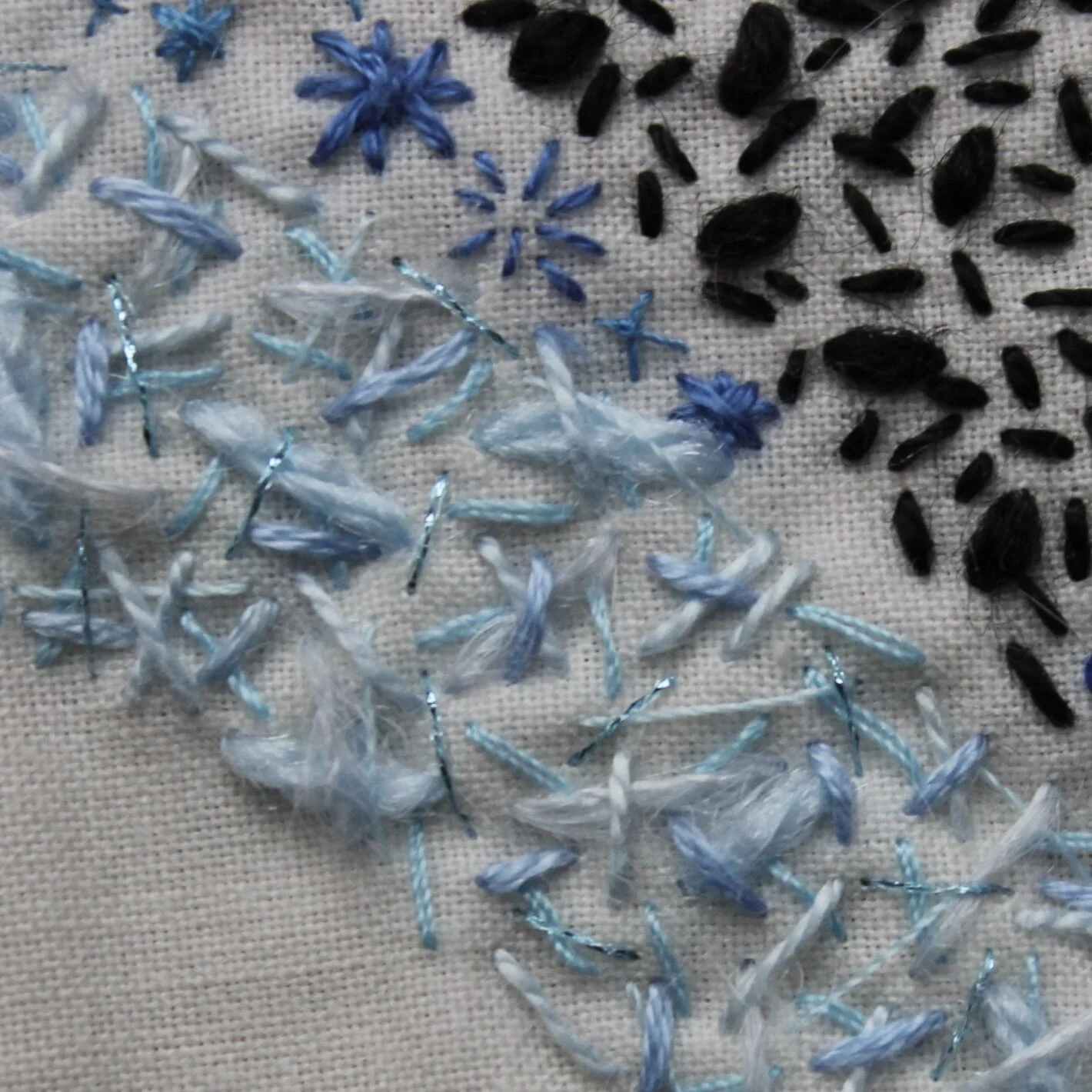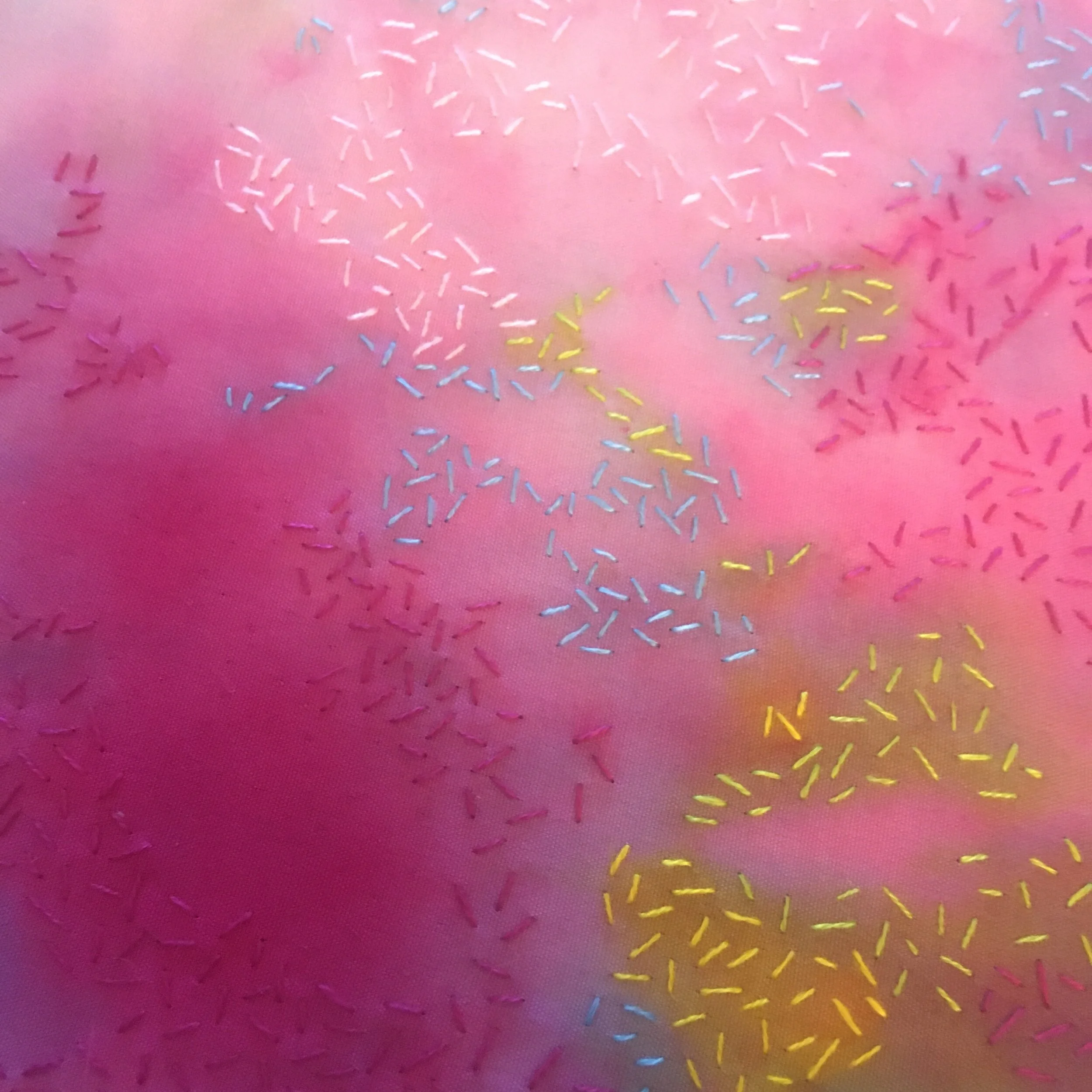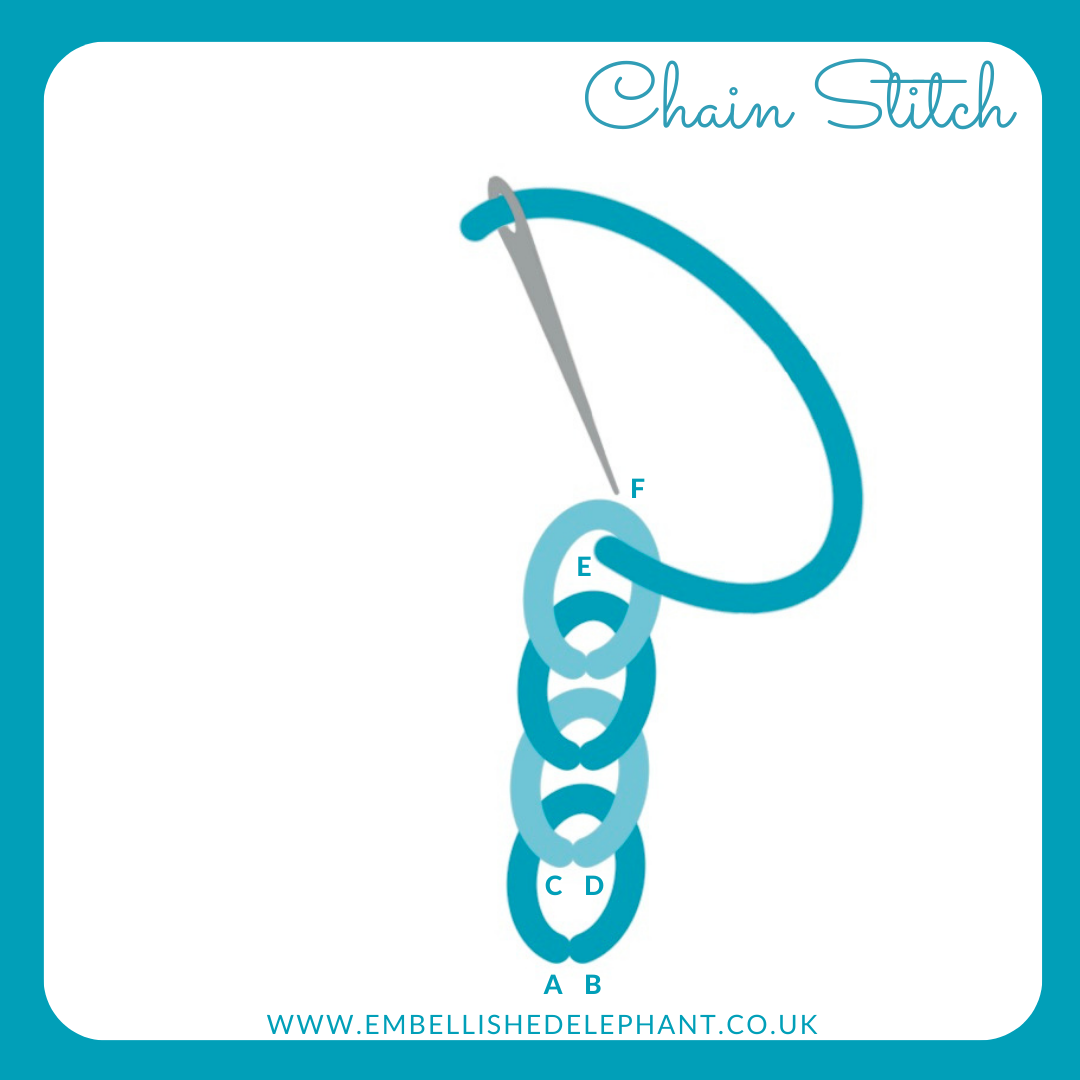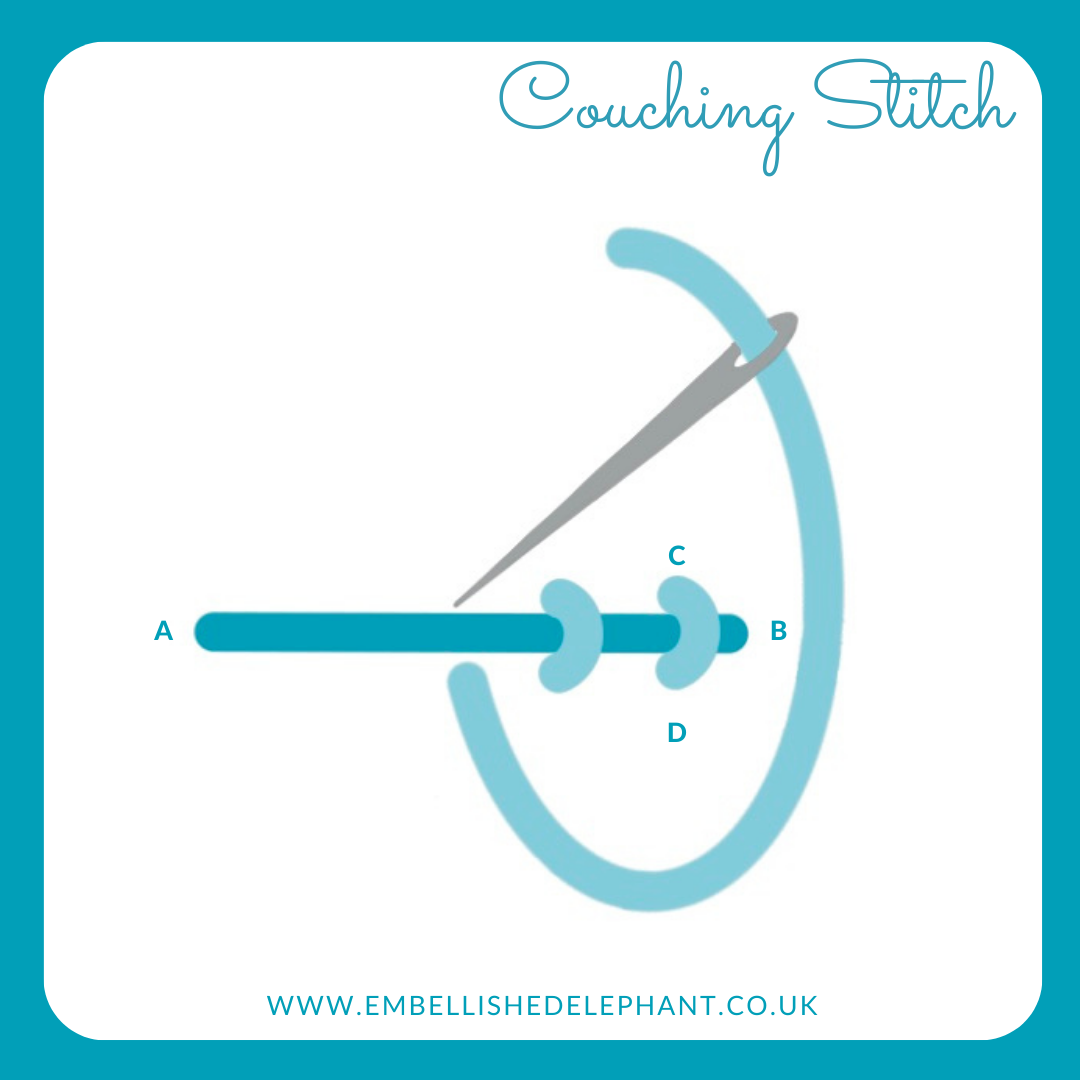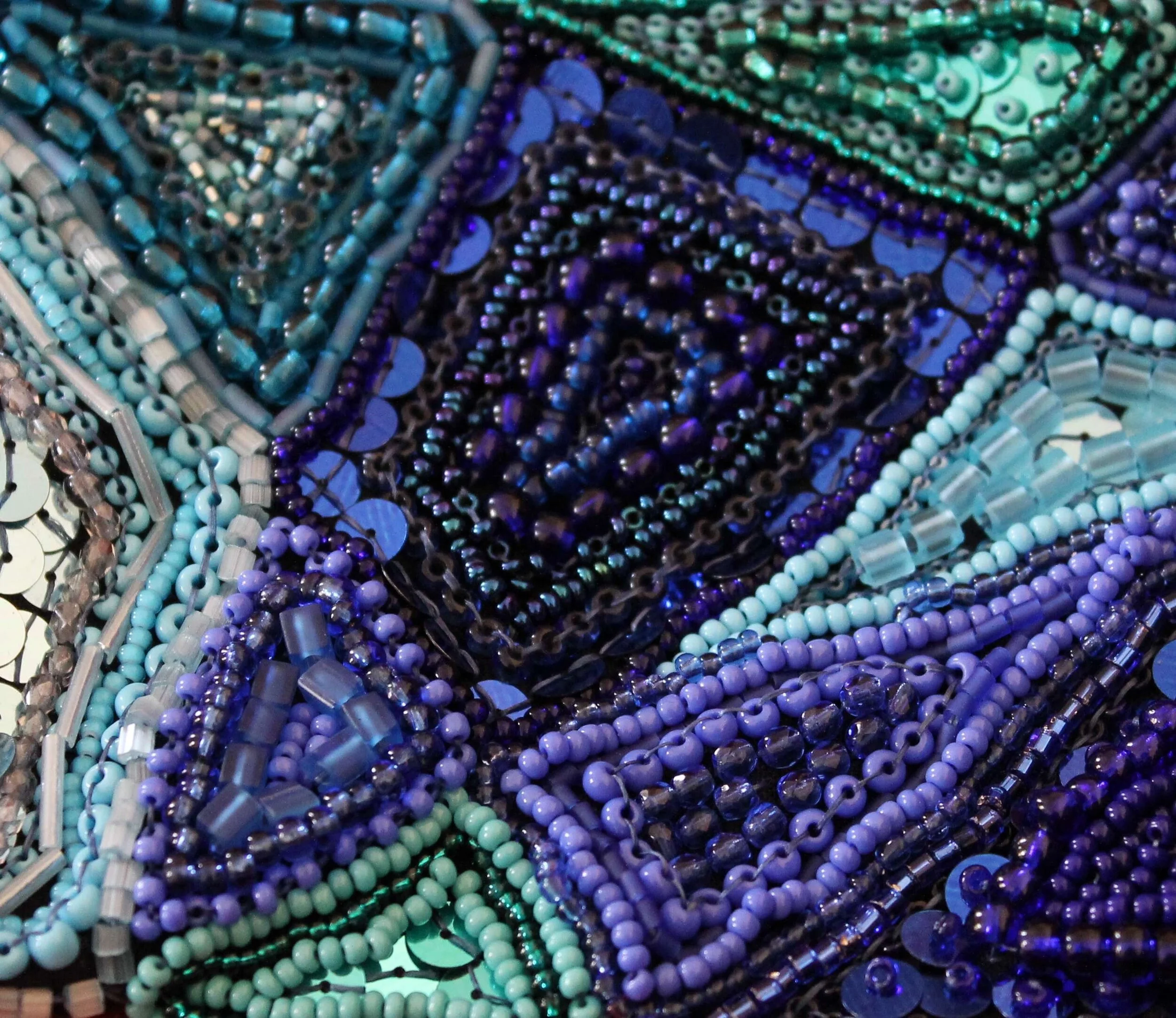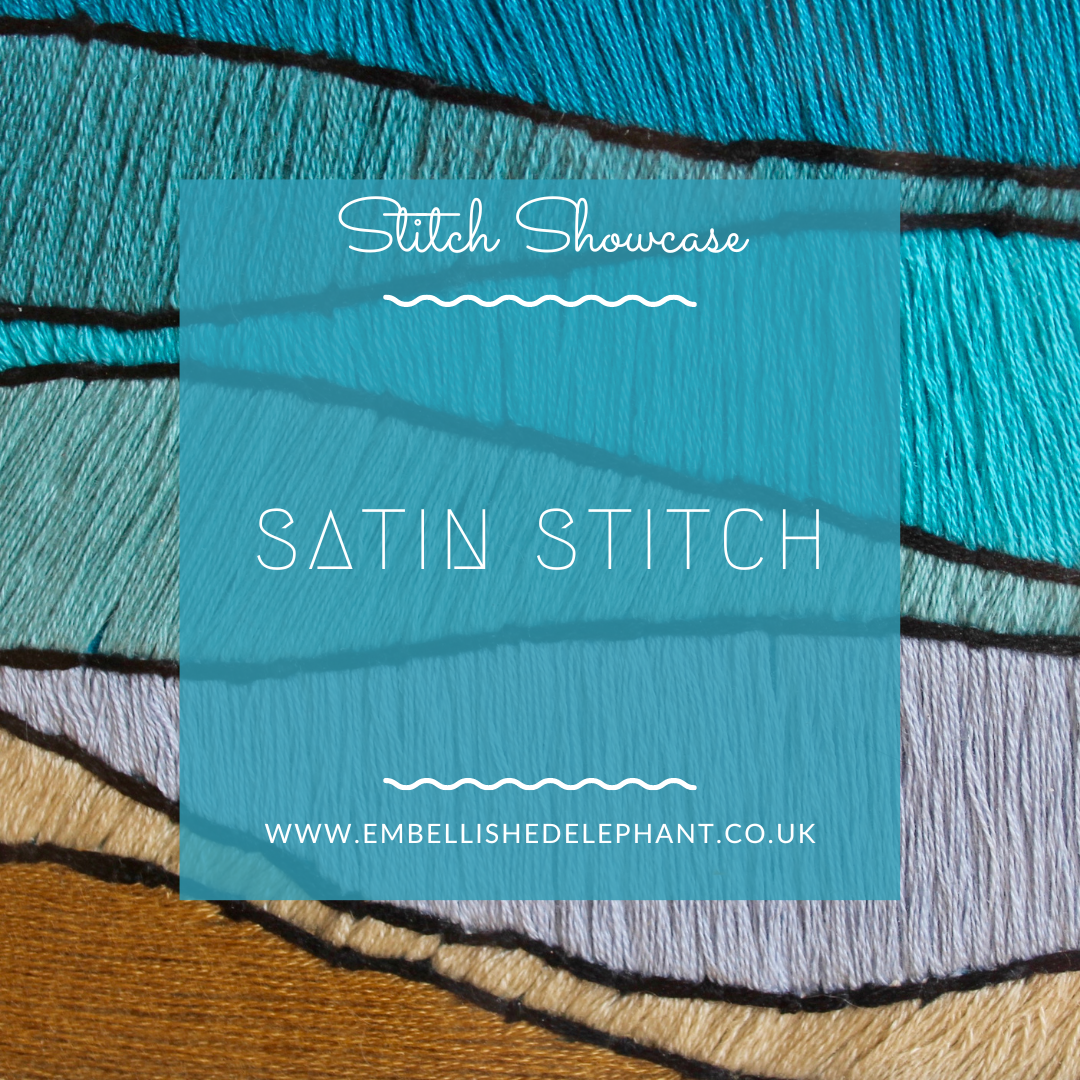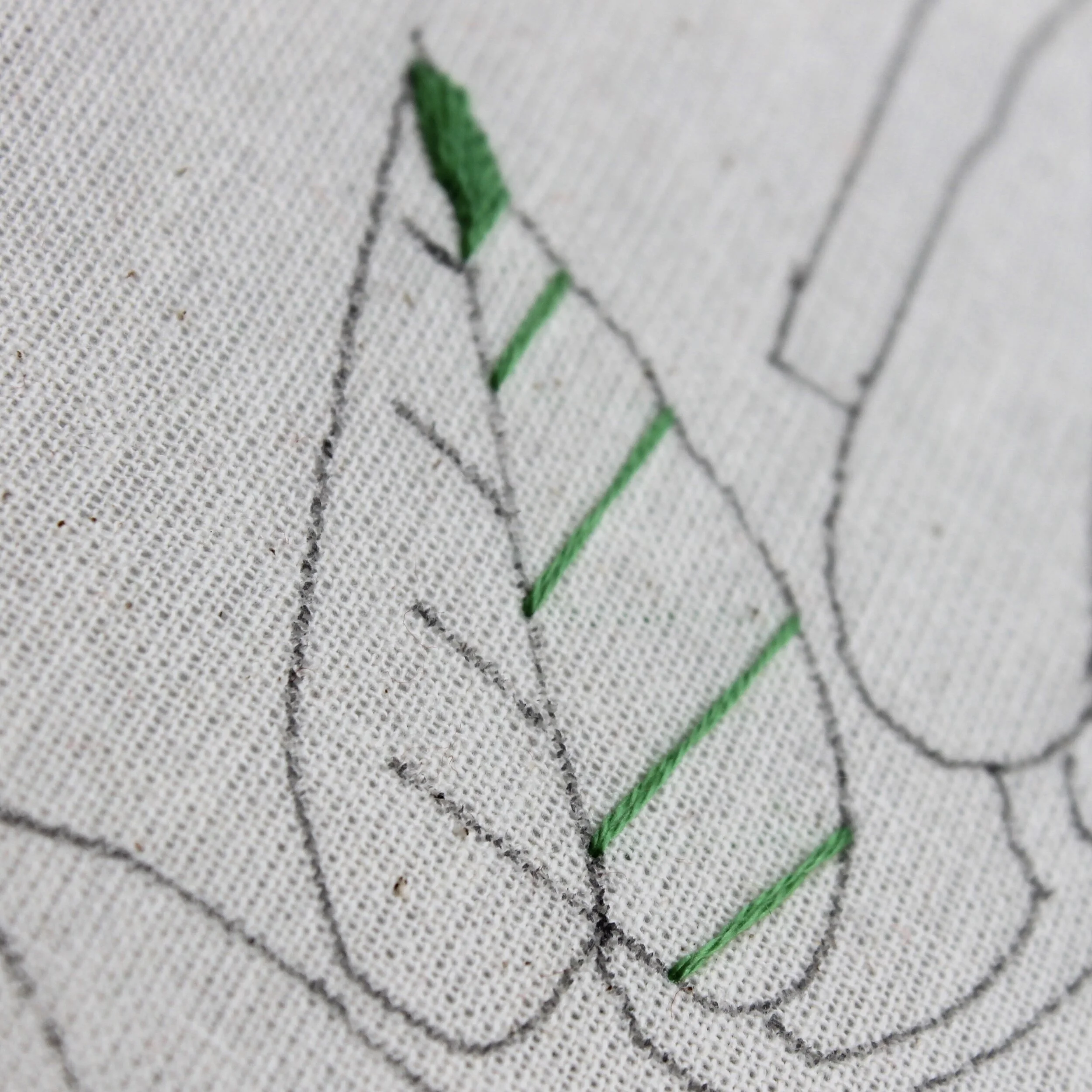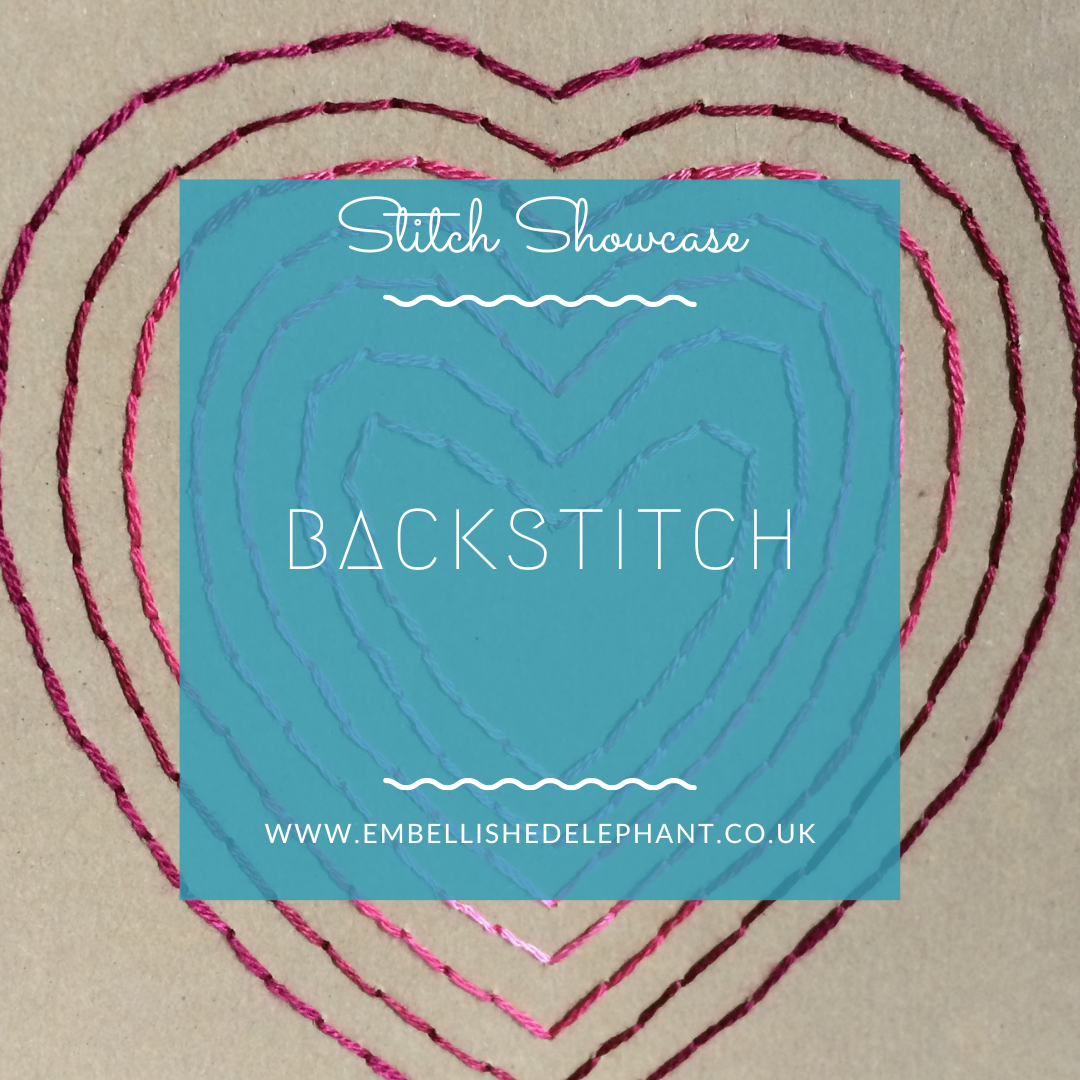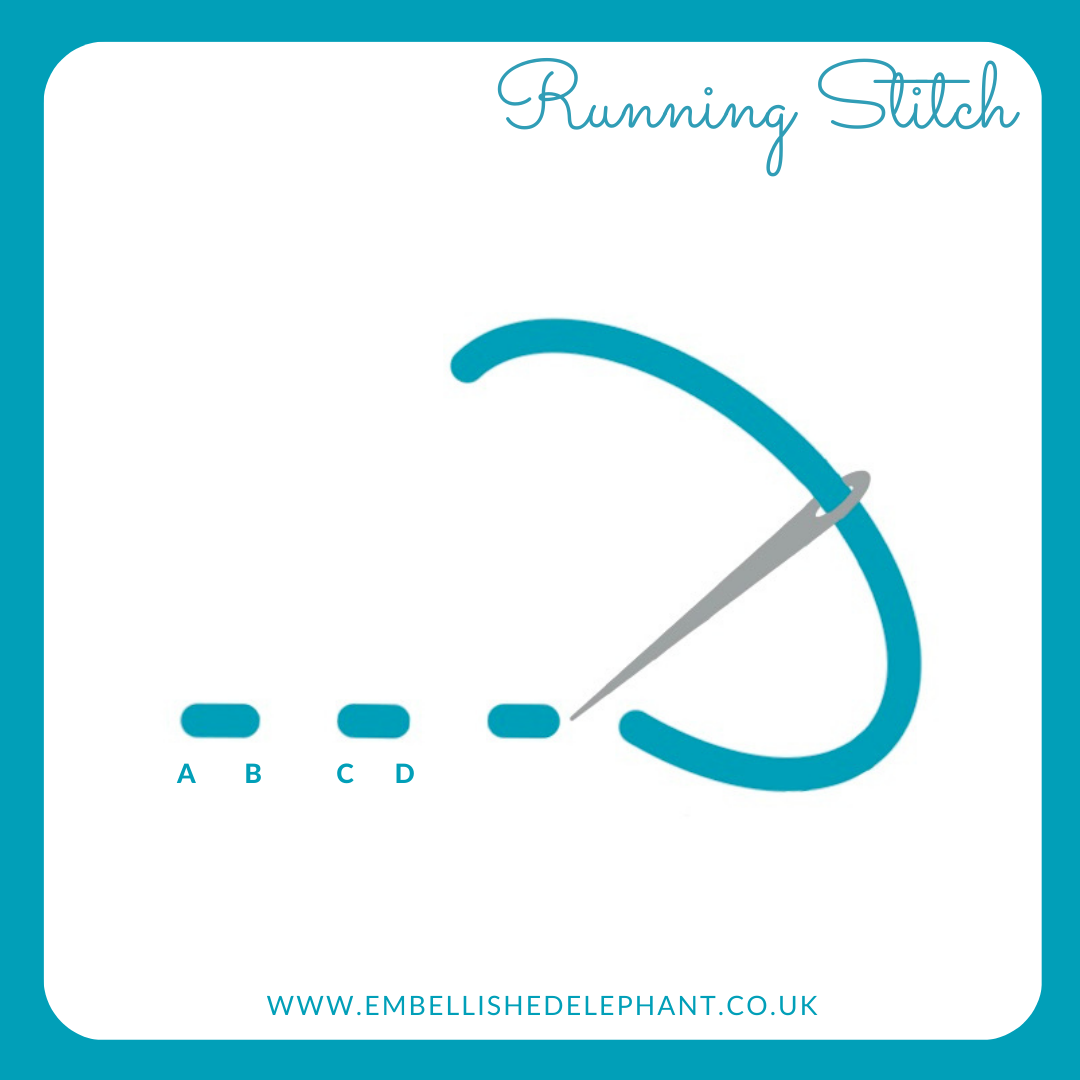When I first encounter split stitch I wasn’t a big fan but as I’ve used it in more projects it’s one I now love. At its basic level it is a backstitch with a bit of variation in where you bring up the needle to start each stitch. It’s a great stitch for any botanical based embroidery, so if you are a plant lover then this is one to practice.
Create a stitch as if you were starting running or back stitch (A to B)
Then bring the needle back up through the fabric about 1mm along the stitch you just made (C)
Carefully poke the needle through the fabric and through the thread so that you 'split' the strand/strands evenly
Complete the stitch (D) making it the same length overall as the first stitch.
This method can be a bit tricky so an alternative method that I find a bit easier is to create the first stitch, then bring the needle up through the fabric at the point where you want the next stitch to end (D). Then poke it back down through the thread to split the strand/strands into two even parts (C).
This stitch can be worked with just one strand of thread. If working with multiple strands it is best to have an even number otherwise there is a slightly lopsided split
Split stitch can be used in different ways in the same piece. In this tree blossom embroidery there are some parts stitched using one strand and split stitch, other parts use two-stranded split stitch and other parts has lines of split stitch next to each other to create a thicker branch.
Split stitch can works well with single strands of thicker thread to create a plaited effect as shown in this word art embroidery.
Want to try this stitch? It’s a stitch I recommend in my elephant ear plant kit, spring blossom kit, snowdrop kit and crocus kit.
Sign up to my email newsletter to get a monthly free embroidery pattern and a round up of Stitch Showcase blogs.



